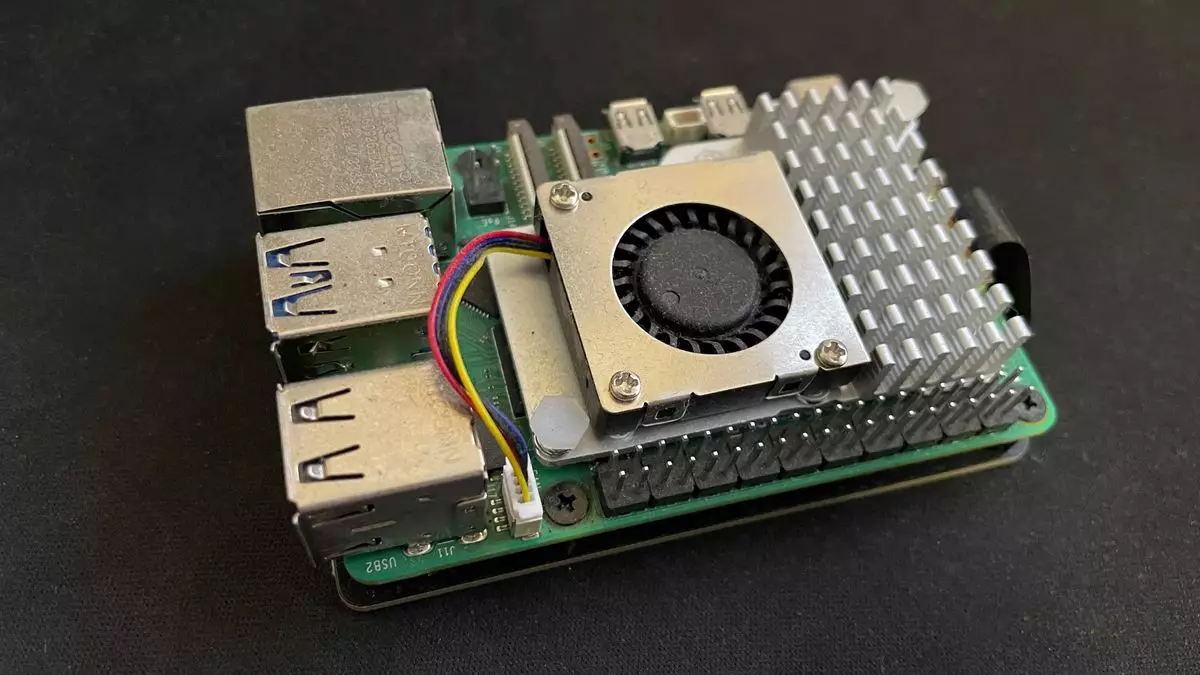The technological landscape is ever-evolving, and one recent development that has captured the interest of hobbyists and professionals alike is the release of the Raspberry Pi 5 in 2023. The introduction of PCIe drive support has opened up a myriad of possibilities, allowing users to reconsider what this compact computer can accomplish. However, the initial excitement was tinged with disappointment, as the official solutions for integrating solid-state drives (SSDs) were initially lacking. In this article, we’ll explore the transformation of the Raspberry Pi 5 into a viable desktop computer and delve into the new officially supported SSD options.
When the Raspberry Pi 5 launched with PCIe drive support, it sparked a whirlwind of speculation regarding potential capabilities, particularly in gaming and desktop computing. However, the absence of official Raspberry Pi PCIe SSD solutions at launch created a barrier for enthusiasts wishing to leverage this exciting feature. The remedy appeared later in the form of the M.2 HAT+, which facilitates the connection of SSDs but still required third-party storage solutions. This initial roadblock left many waiting for a streamlined option that would simplify the upgrade process.
Fast forward to Tom’s Hardware reporting on the new official Raspberry Pi SSDs and kits, and the excitement surrounding the Raspberry Pi platform is palpable. These kits integrate seamlessly with the M.2 HAT+, finally granting users an efficient way to harness the power of SSDs without the guesswork involved in third-party options. This move signals a significant shift by the Raspberry Pi foundation, affirming its commitment to enhancing user experience.
In my personal dive into the Raspberry Pi 5’s capabilities, I set out to explore its performance as a gaming device. The Pi 5 presents a substantial leap in performance compared to its predecessor, the Pi 4. The crucial element that enhances its functionality is the active cooling feature, which helps mitigate overheating during demanding tasks. While gaming on the Pi 5 isn’t on par with high-end dedicated gaming machines, I was surprised to find that it could run titles like Doom 3 at playable frame rates, albeit at lower resolutions.
My initial attempts at gaming were hindered by the standard MicroSD storage, an experience that highlighted the need for more stable and faster data retrieval. Utilizing an SSD, such as the Crucial P3, through a HAT from Pimoroni allowed me to experience the full potential of the Raspberry Pi 5. However, the initial costs of third-party integration were steep, and choosing the right SSD required careful consideration. If the official SSD kits had been available sooner, I would have undoubtedly opted for that solution.
Raspberry Pi’s recent announcement included news about the SSDs’ compatibility with PCIe 3.0, even though the Pi 5 officially supports only PCIe 2.0. This presents an opportunity for seasoned users to unlock higher speeds by tweaking the Pi’s configuration file. By adding a simple line to the config, users can overclock their setup, ushering in a new era of performance—the excitement of playing with configurability is exhilarating for tech enthusiasts.
The pricing of the SSDs also reflects Raspberry Pi’s dedication to accessibility. With the entry-level 256GB drive priced at only $30 and the 512GB variant at $45, these options are competitively priced for users looking to add storage capabilities to their Raspberry Pi 5. Moreover, the specified performance metrics—40k IOPS for the 256GB version and 70k IOPS for the 512GB—underscore that performance won’t be sacrificed for affordability.
While gaming may take center stage in discussions around the Raspberry Pi 5, it is essential to acknowledge the broader applications of SSD integration. Beyond the gaming enthusiast’s dreams of retro gaming systems like Retropie or Recalbox, the SSDs present a multitude of options for general computing tasks, media consumption, and even light programming projects. The versatility of the Raspberry Pi 5, especially with the new SSD kits, means that users can explore innovative applications previously constrained by performance bottlenecks.
For those wishing to experiment, the introduction of officially supported SSDs combined with the M.2 HAT+ breathes new life into the Raspberry Pi ecosystem. As users flock to their platforms for educational projects, home automations, or gaming setups, it’s clear that the Raspberry Pi 5 stands ready to meet the challenges of modern computing tasks.
Raspberry Pi 5’s partnership with official SSDs marks a significant milestone in the ongoing journey of single-board computers. These developments boost the device’s capabilities and enhance its appeal as the ultimate educational tool and home computing device. If you’ve ever considered pushing the boundaries of what a Raspberry Pi can achieve, now is undoubtedly an exciting time to dive in.

